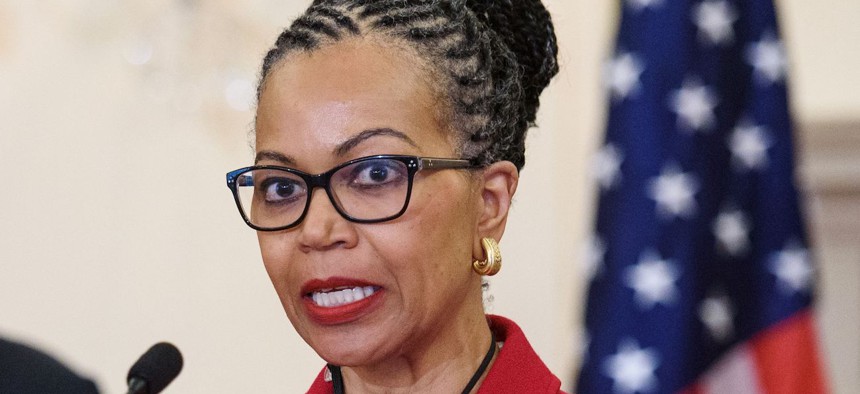The State Department’s first DEIA officer departs
They leave behind the department’s first-ever disaggregated data report on demographics, which will “help hold us accountable for doing the work that we say that we want to do.”
When the chief diversity officer at the State Department recently vacated the role after over two years, she left a parting gift: data.
Amb. Gina Abercrombie-Winstanley, the first chief diversity officer at the State Department, who departed at the end of June, said one of her biggest accomplishments is getting access to and sharing publicly departmental shows a bureau-by-bureau description of the State’s workforce data – broken down by race, ethnicity, sex, disability, grade/rank and job series/skill code. This came in the form of the department’s first-ever demographic baseline report, released on June 23, Like other federal agencies, the department has struggled to attract and retain a diverse workforce.
“Having those numbers is going to help hold us accountable for doing the work that we say that we want to do,” she told Government Executive in a recent interview. With an “aggregated form you’re missing out on the nuances that are so important…You’ve got to go down more deeply into those numbers,” which is what this report does.
For example, “it was important for us to understand that women of all sorts are generally hitting a glass ceiling at the GS-13 level, then we have to look at a particular bureau.” From there, you can look at the circumstances for hiring for and advertising these roles, she said.
During a hearing last month––in which Abercrombie-Winstanley faced scrutiny and criticism from Republicans on the department’s DEIA efforts–– she testified that State is seeking $76 million for DEIA efforts in fiscal 2024 (a little under 10% of which would go to her office and the rest would be spread throughout the department). Part of what that funding is used for are these demographic baseline reports.
In addition to the data, another important step the department has taken has been a “culture change,” such as talking about diversity and inclusion in recruitment and hiring, said Abercrombie-Winstanley. Going forward messaging is going to be important to share with the workforce and public what progress they’ve made, specifically in carrying out actions from their DEIA strategic plan, which was finalized in September 2022.
HuffPost reported last month on alleged shortcomings during her tenure in the role and in February, Jalina Porter, a former principal deputy spokesperson at the State Department published an opinion piece in Foreign Policy arguing more needs to be done to advance racial equity.
“We have not gone far enough, but I would argue that the criticism is premature at best and perhaps ill-informed,” said Abercrombie-Winstanley. “Insofar as it did not take us two years to get where we are today.” She added that the department has been dealing with these issues since she was a young diplomat in 1985.
“We are trying to recruit for diversity and hire for merit,” she started. “I am handing over a mission that will continue to greater success.”








